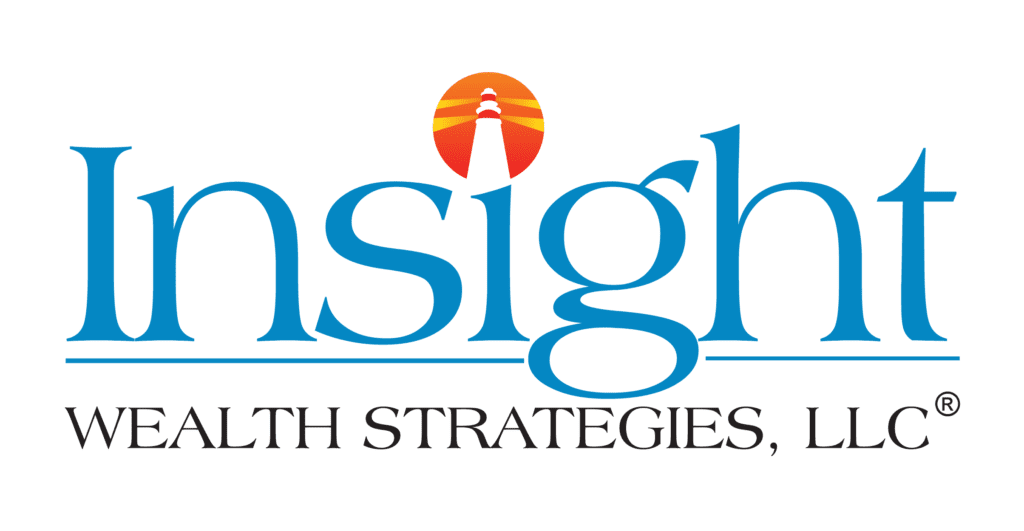Retirement Income Strategies: Sustainable Cash Flow
Retirement marks a significant transition from earning a steady income to relying on savings and investments to support your lifestyle. This shift from accumulating wealth to drawing down assets makes the concept of sustainable cash flow crucial. Without a well-thought-out plan, retirees risk outliving their savings, facing financial hardships, and experiencing reduced quality of life during their golden years. Sustainable cash flow ensures that you have a steady, predictable income stream to cover your essential expenses and lifestyle choices throughout retirement. It involves more than just having a substantial nest egg; it requires a comprehensive strategy that considers various retirement income sources, tax implications, inflation, market volatility, and potential healthcare costs.
A good retirement income strategy balances your needs for growth, income, and preservation of capital. By integrating various income streams—such as Social Security benefits, pensions, retirement accounts, annuities, and other investments—you can create a stable financial foundation. This approach not only helps mitigate risks but also provides peace of mind, allowing you to enjoy retirement without the constant worry of running out of money.
Understanding Retirement Income
Retirement income is the money you will use to support yourself after you stop working full-time, sourced from Social Security benefits, pensions, retirement accounts like 401(k)s and IRAs, annuities, and personal savings. Each of these has its own rules, tax implications, and benefits, making it important to understand how they work together in a comprehensive plan. Creating a reliable income stream is vital for financial stability and peace of mind, ensuring you can cover everyday expenses, healthcare costs, and unexpected needs without worrying about depleting your resources.
Diversifying Income Sources for Stability
Diversifying income sources is crucial for ensuring financial stability in retirement. Relying on multiple income streams can help mitigate risks associated with market fluctuations, inflation, and unexpected expenses. Each income source has its own strengths and limitations and combining them can provide a more resilient financial foundation. For example, Social Security offers a stable, inflation-adjusted income, while pensions provide predictable payments based on your employment history. Retirement accounts and personal savings offer flexibility and potential growth. By diversifying, you create a balanced and reliable income strategy that can better withstand economic uncertainties and provide consistent support throughout your retirement years.
Investment Strategies for Retirement Income
Investment options play an important role in generating income during retirement, with various strategies tailored to sustain cash flow. Dividends from stocks provide regular income, often with the potential for growth if the companies perform well. Interest from bonds and other fixed-income investments offers stability and predictability, making them a cornerstone for many retirees seeking steady returns. Annuities, which can be purchased to provide guaranteed income for life or a set period, add another layer of financial security by converting a lump sum into a reliable stream of payments.
Balancing Risk and Return
Balancing risk and return in retirement investments is vital for maintaining financial stability and ensuring that your savings last throughout your retirement years. As you transition from accumulating assets to generating income, it’s important to strike a balance between seeking growth and preserving capital. High-risk investments can offer substantial returns but also come with the potential for significant losses, which can be detrimental in retirement when you have less time to recover from market downturns. Conversely, overly conservative investments may not generate enough income to keep up with inflation, eroding your purchasing power over time.
To alleviate risk and create a well-balanced portfolio, consider diversifying across various asset classes, such as stocks, bonds, and real estate. Diversification helps spread risk, so a poor performance in one investment can be offset by gains in another. Within these asset classes, you can diversify further by investing in different sectors and geographical regions. Regularly reviewing and rebalancing your portfolio ensures that your investment strategy remains aligned with your risk tolerance, financial goals, and market conditions. This balanced approach helps you achieve a sustainable income while protecting your retirement savings from excessive risk.
Managing Withdrawals: Strategies to Avoid Depletion
Effectively managing withdrawals from retirement accounts is necessary to ensure your savings last throughout your retirement. One popular strategy is the 4% rule, which suggests withdrawing 4% of your retirement portfolio in the first year of retirement and then adjusting the amount annually for inflation. This method aims to provide a steady income stream while preserving the principal over a 30-year retirement period1. However, recent updates and critiques of the 4% rule suggest that this approach may be too rigid, especially given varying market conditions and longer life expectancies.
To help improve the sustainability of your withdrawals, you can consider more flexible methods such as the “dynamic spending” approach, which adjusts withdrawal rates based on portfolio performance and remaining life expectancy. This strategy allows for higher withdrawals in good market years and more conservative withdrawals in down markets, helping to preserve capital during economic downturns. Another effective strategy is the “bucket strategy,” which involves dividing your assets into separate “buckets” based on time horizons and risk levels. For example, you might allocate funds for short-term needs in low-risk investments and long-term needs in higher-growth investments.
Additionally, it’s essential to be mindful of required minimum distributions (RMDs) from certain retirement accounts like traditional IRAs and 401(k)s, which begin at age 732. Properly timing and managing these withdrawals can minimize tax implications and help extend the life of your portfolio. Regularly reviewing and adjusting your withdrawal strategy in response to changes in your financial situation, market conditions, and retirement goals can significantly enhance the longevity of your retirement savings and prevent the risk of depletion.
Strategies for Managing Withdrawals:
- The 4% Rule:
- Withdraw 4% of your retirement portfolio in the first year.
- Adjust the amount annually for inflation.
- Consider updates based on current market conditions and life expectancy.
- Dynamic Spending Approach:
- Adjust withdrawal rates based on portfolio performance.
- Higher withdrawals in good years, lower in down markets.
- Bucket Strategy:
- Allocate assets into short-term and long-term “buckets.”
- Short-term needs in low-risk investments.
- Long-term needs in higher-growth investments.
- Required Minimum Distributions (RMDs):
- Start at age 73 for traditional IRAs and 401(k)s.
- Properly time and manage withdrawals to minimize tax implications.
Tax Considerations for Retirement Income
Taxes can significantly impact your retirement income, reducing the amount of money available for your living expenses and other needs. To manage this effectively, it’s essential to implement tax-efficient withdrawal and investment strategies. One approach is to withdraw from taxable accounts first, followed by tax-deferred accounts like traditional IRAs and 401(k)s, and finally tax-free accounts like Roth IRAs. This order helps minimize the overall tax burden and allows tax-advantaged accounts to continue growing. Additionally, consider strategic Roth conversions, which involve converting portions of a traditional IRA to a Roth IRA during lower-income years to take advantage of lower tax rates. Investing in tax-efficient funds, such as index funds or tax-managed funds, and utilizing strategies like tax-loss harvesting can further reduce taxable income.
Contingency Planning: Preparing for Unexpected Expenses
Having a strong contingency plan is vital for handling unexpected expenses in retirement, ensuring that such surprises don’t derail your financial stability. Establishing an emergency fund should be a top priority, with a recommended reserve of three to six months’ worth of living expenses set aside in a readily accessible account. This fund provides a safety net for unforeseen costs like medical emergencies, home repairs, or other urgent financial needs.
Insurance options also play a crucial role in contingency planning. Health insurance, including Medicare and supplemental policies, helps cover medical expenses, while long-term care insurance can protect against the high costs of extended care services. Additionally, maintaining adequate homeowner’s, auto, and life insurance policies can safeguard your assets and provide financial support for your family in case of unexpected events.
Other strategies include keeping a portion of your portfolio in liquid investments, such as money market funds or short-term bonds, which can be quickly converted to cash if needed.
Conclusion
Creating a sustainable cash flow for retirement requires understanding and managing various income sources such as Social Security, pensions, retirement accounts, annuities, and personal savings. Diversifying these income streams can help enhance financial stability and your peace of mind. Integrating the elements mentioned in this blog into a personalized retirement income plan, can help you secure a steady and reliable income stream, allowing you to enjoy your retirement years without financial worries. Taking proactive steps now to build a tailored plan that meets your unique needs and goals will ensure a stable and fulfilling retirement.
If you are looking for professional retirement planning advising, consider our services:
- Financial Planning Houston
- San Ramon Financial Planning
- Wealth Management Houston
- Bay Area financial advisors
- San Ramon Wealth Management
Insight Wealth Strategies is here to help you navigate these retirement risks and more. Whether you’re looking for retirement income planning or understanding your retirement benefit options, our team can provide personalized advice. We can also assist you in maximizing your social security benefits and choosing the right retirement income strategies for your situation. Consult with a financial advisor to start your journey towards a secure and prosperous retirement.
Reviewed by,

Chad Seegers, CRPC®
Chad began his career with Sagemark Consulting in 2005 and then became a Select member of Sagemark’s Private Wealth Services which operated as a national resource for financial planners focusing on Advanced Strategies in the High Net Worth marketplace. Chad then began his partnership with Insight Wealth Strategies in 2013 focused on retirement planning primarily with Oil and Gas employees and executives. His primary areas of expertise are retirement, estate, and investment strategies as he serves as Investment Strategist for the financial planning team.
Insight Wealth Strategies, LLC is a Registered Investment Adviser. Advisory services are only offered to clients or prospective clients where Insight Wealth Strategies, LLC and its representatives are properly licensed or exempt from licensure. Past performance is no guarantee of future returns. Investing involves risk and possible loss of principal capital. No advice may be rendered by Insight Wealth Strategies, LLC unless a client service agreement is in place.
Insight Wealth Strategies, LLC (IWS) and its affiliates do not provide tax, legal or accounting advice. This material has been prepared for informational purposes only, and is not intended to provide, and should not be relied on for, tax, legal or accounting advice. You should consult your own tax, legal and accounting advisors before engaging in any transaction.

